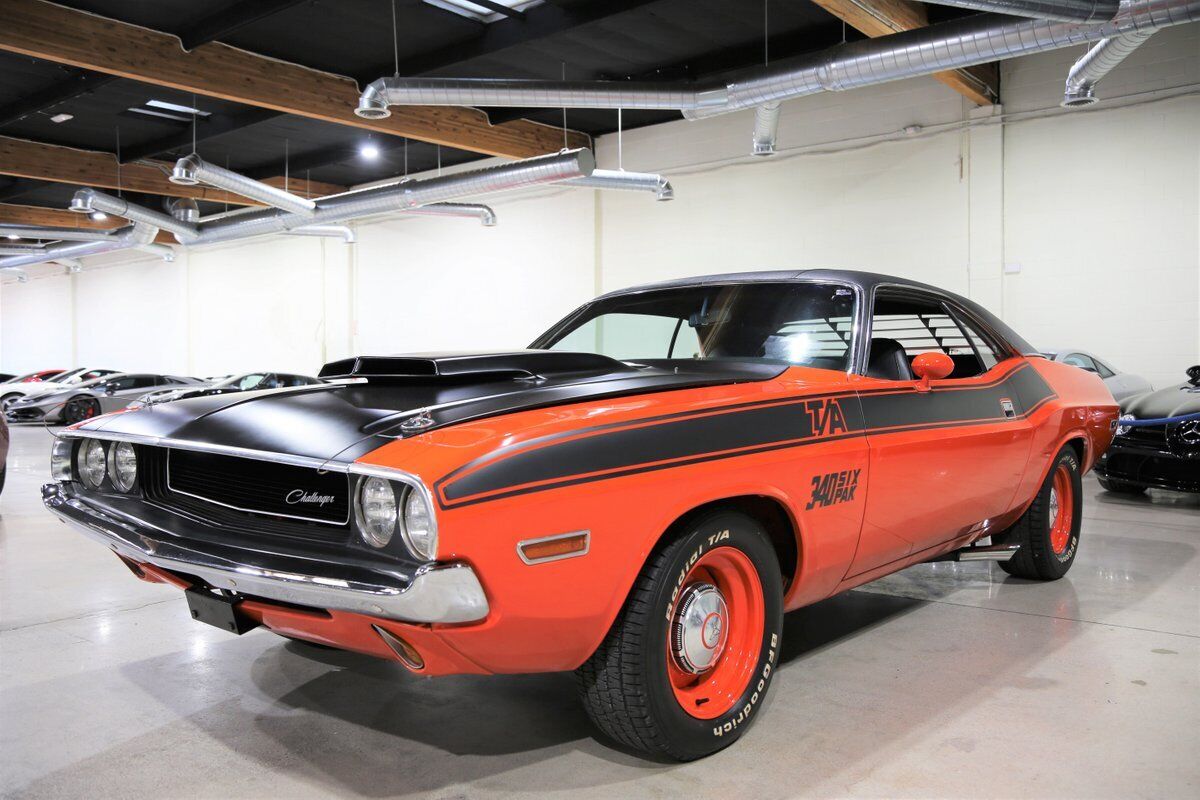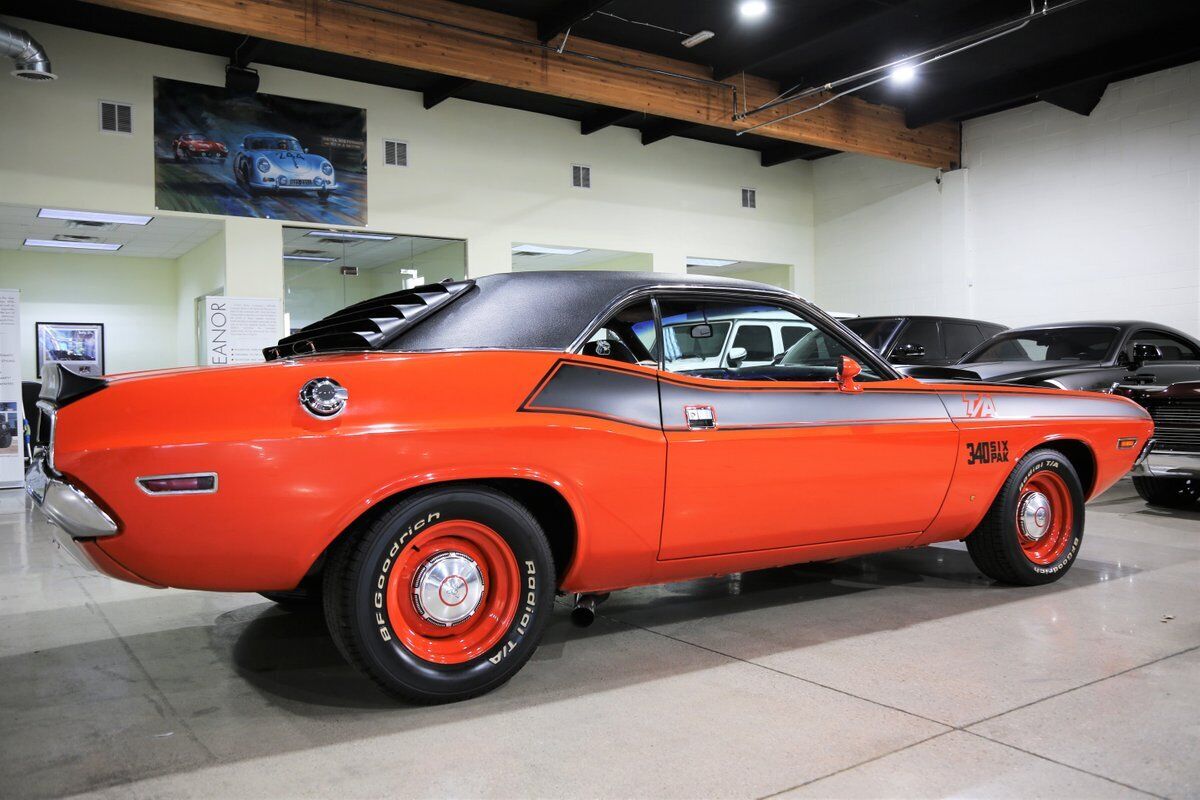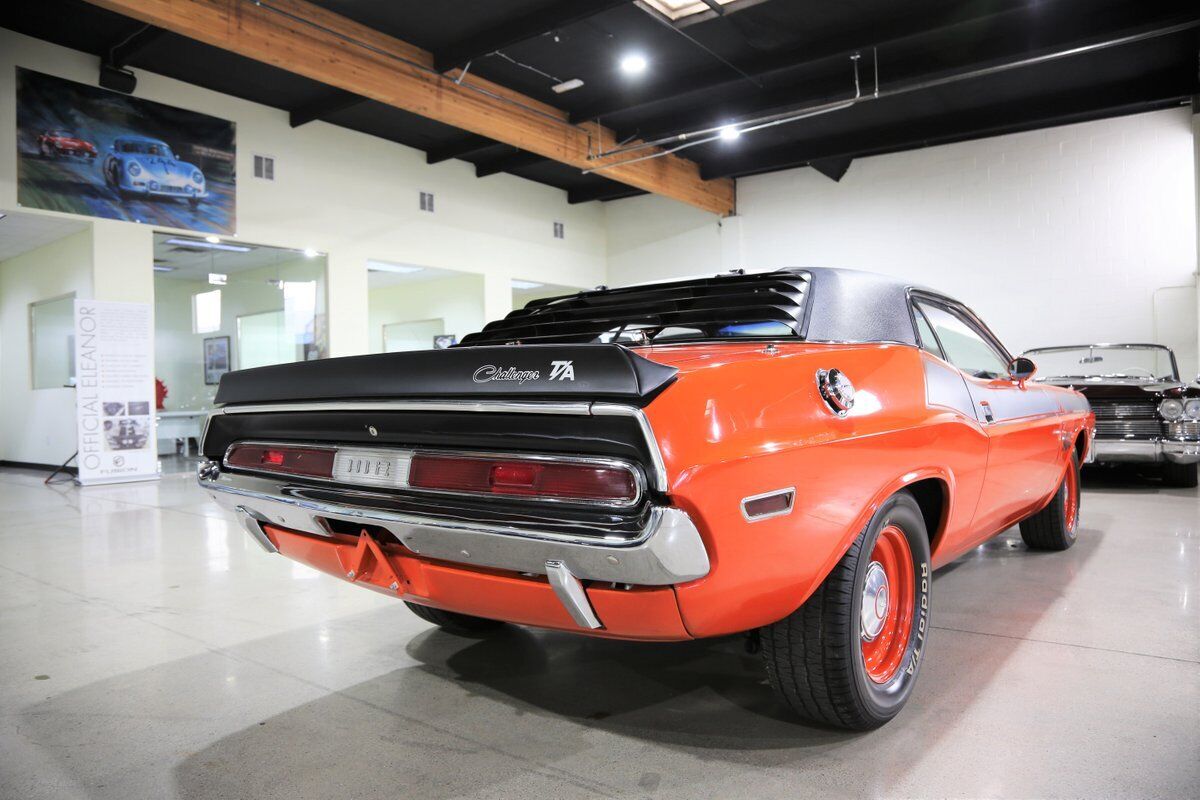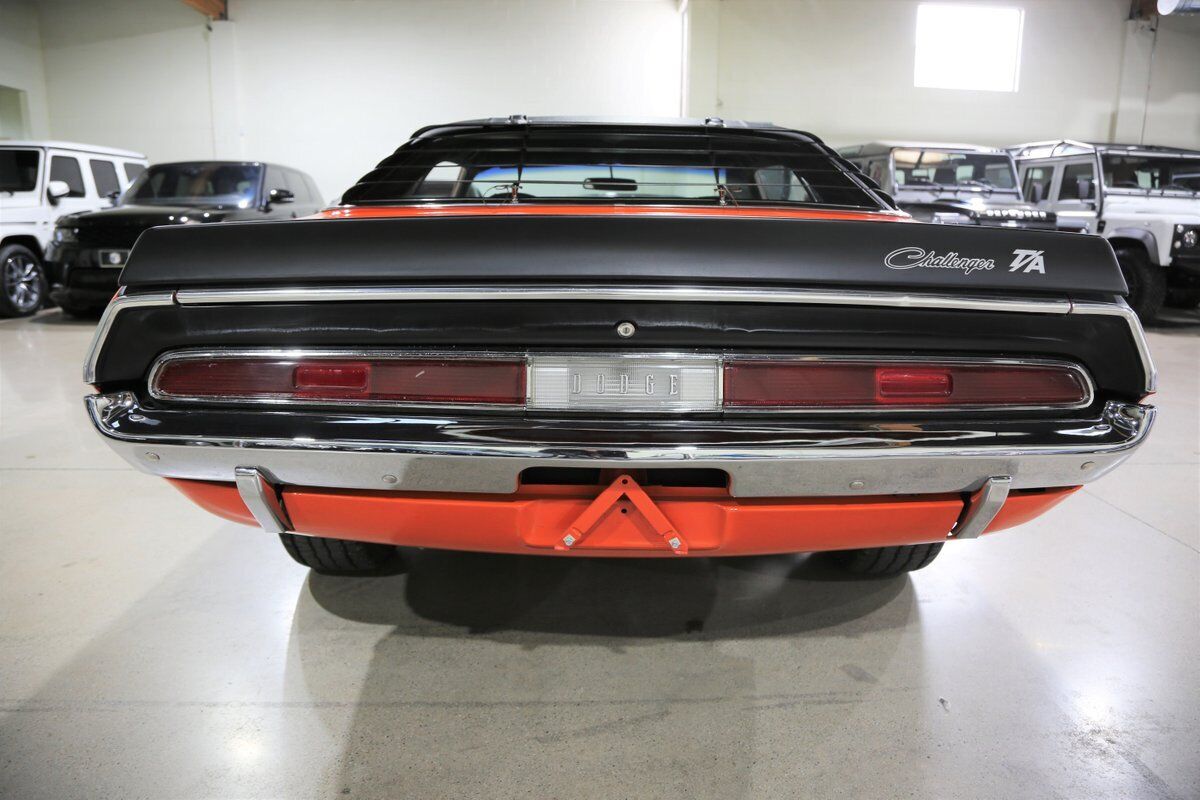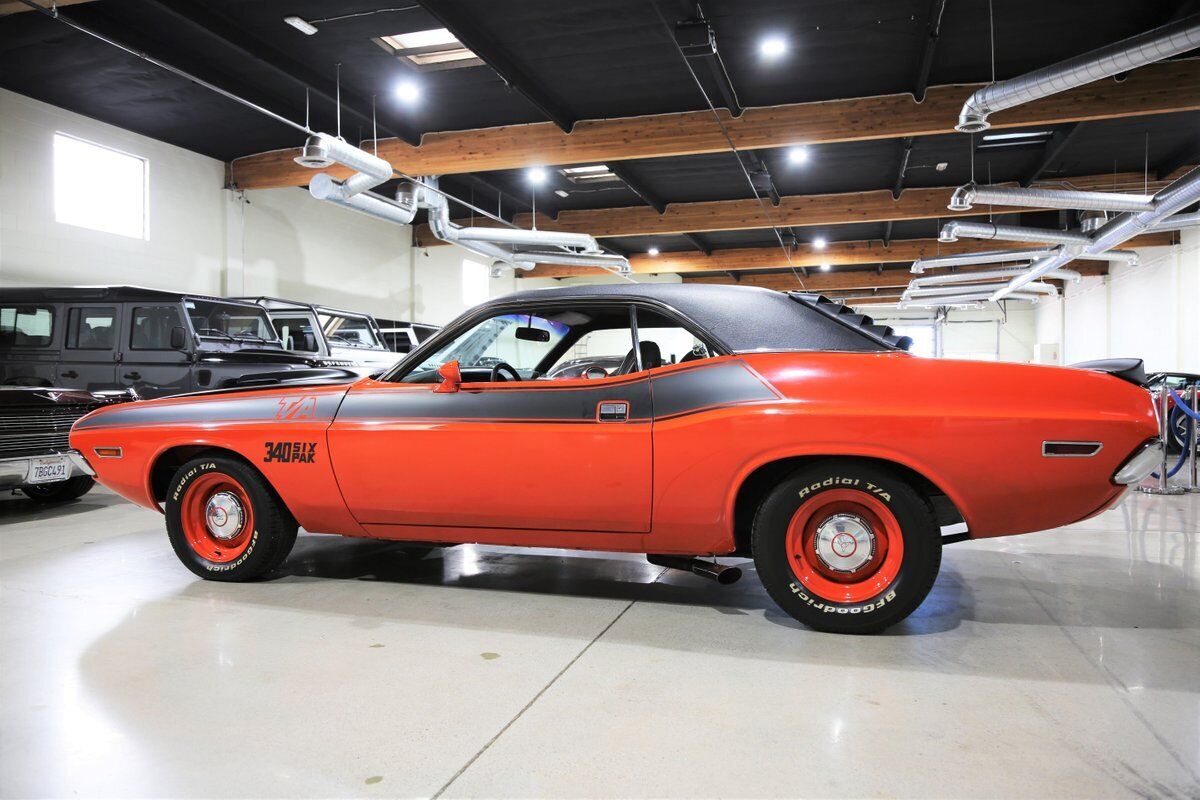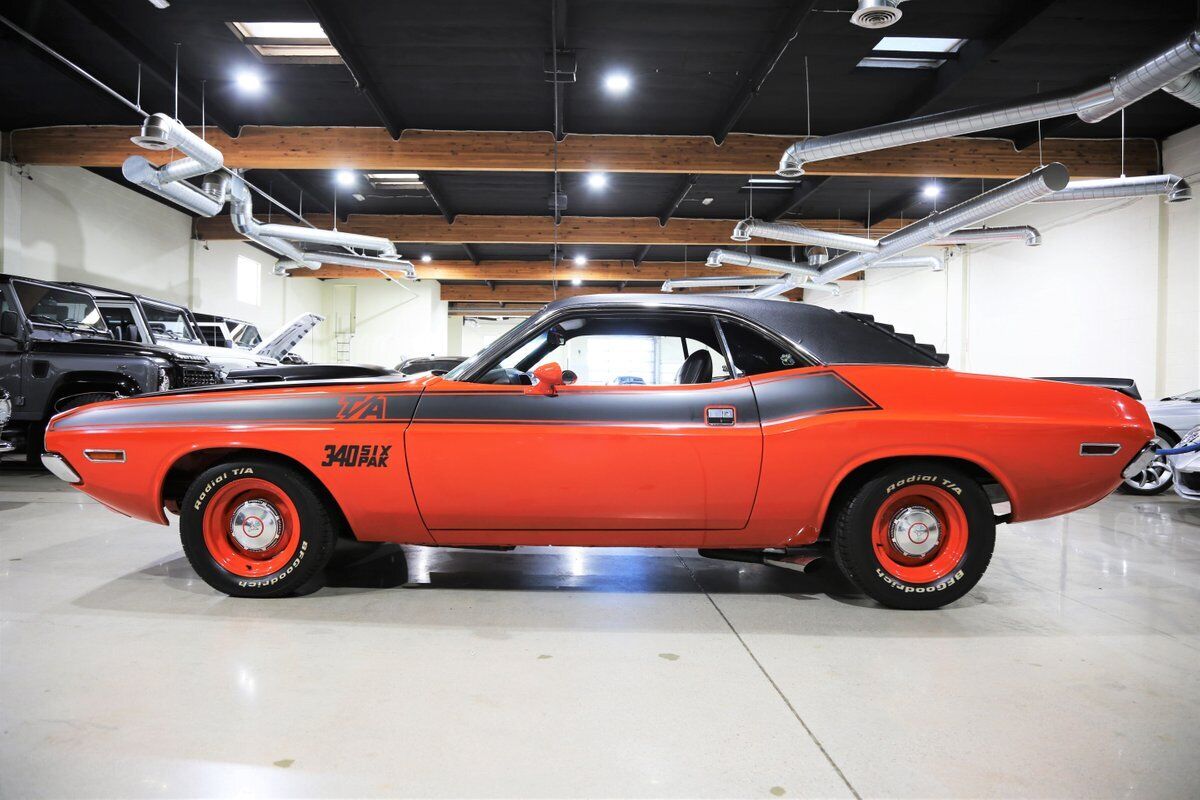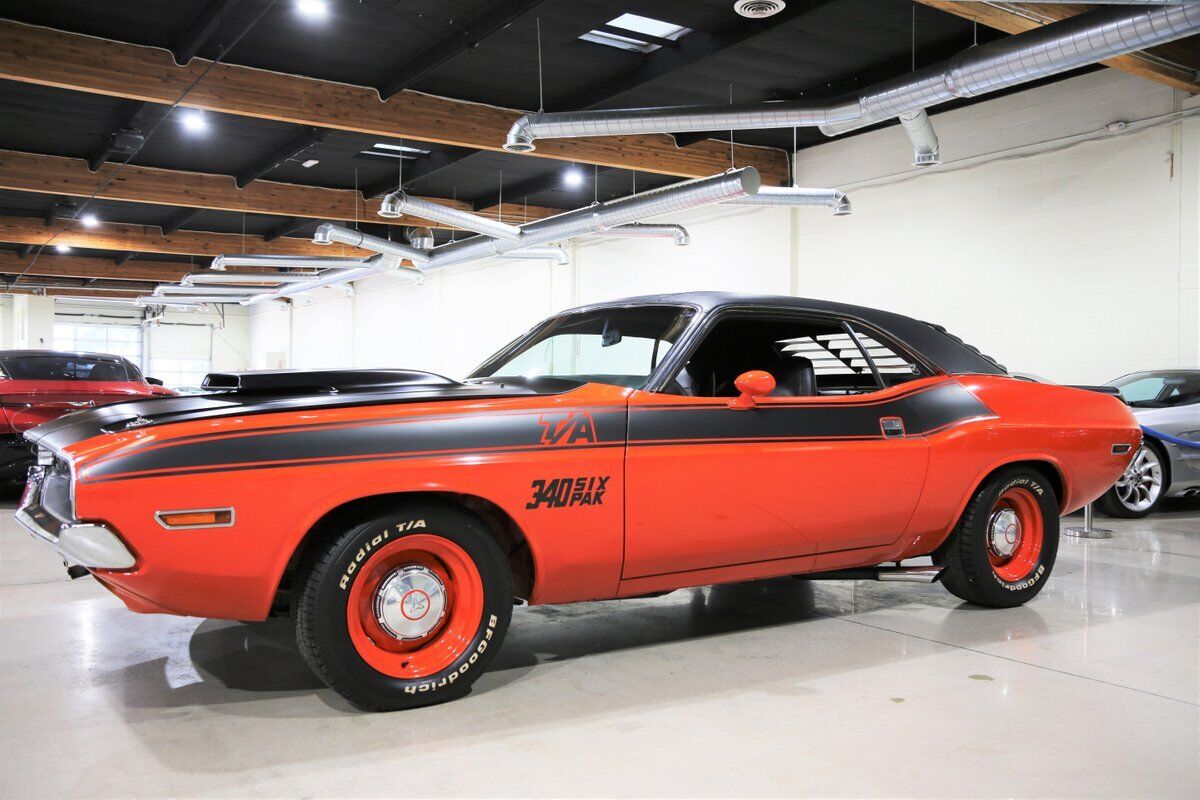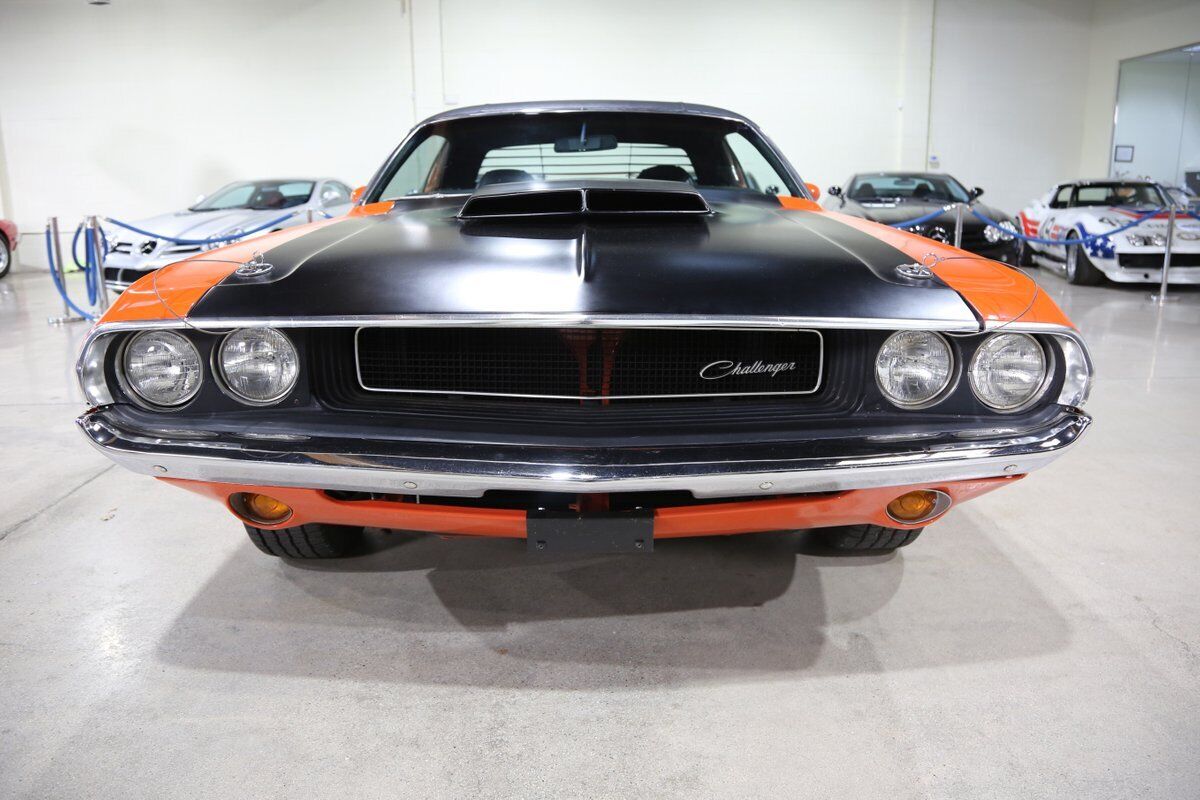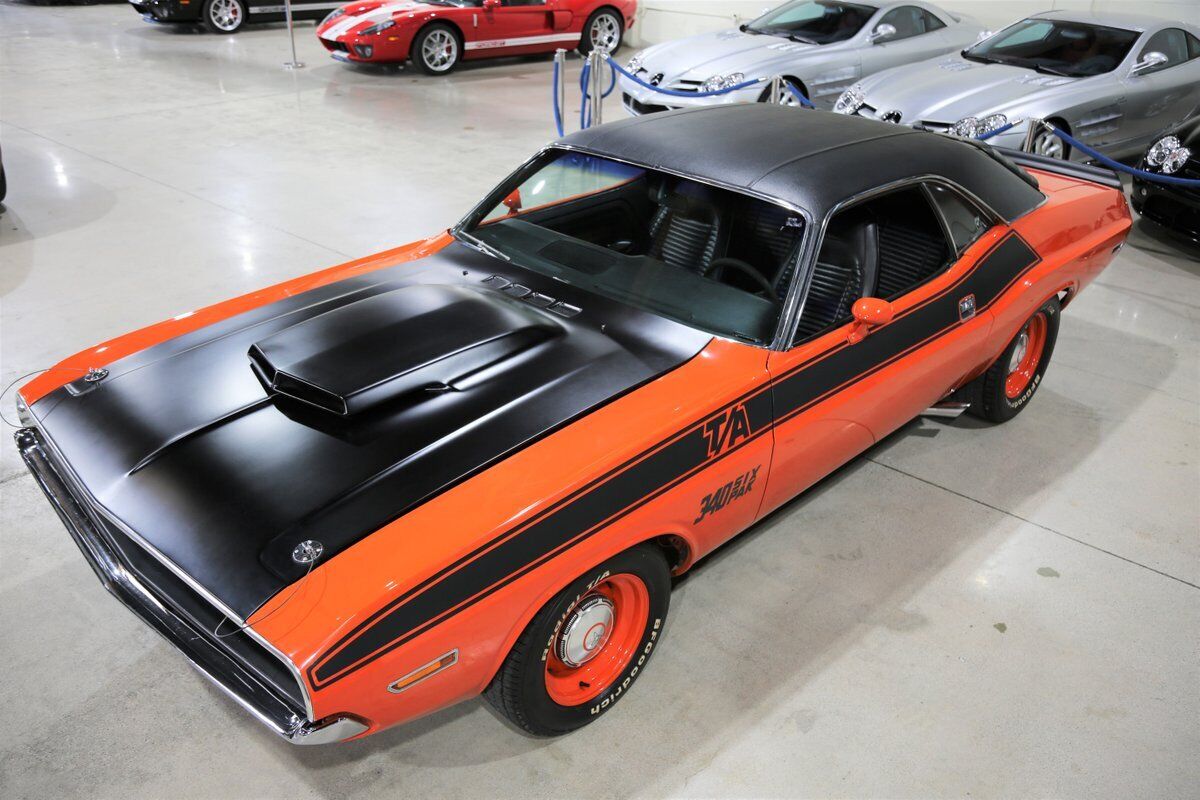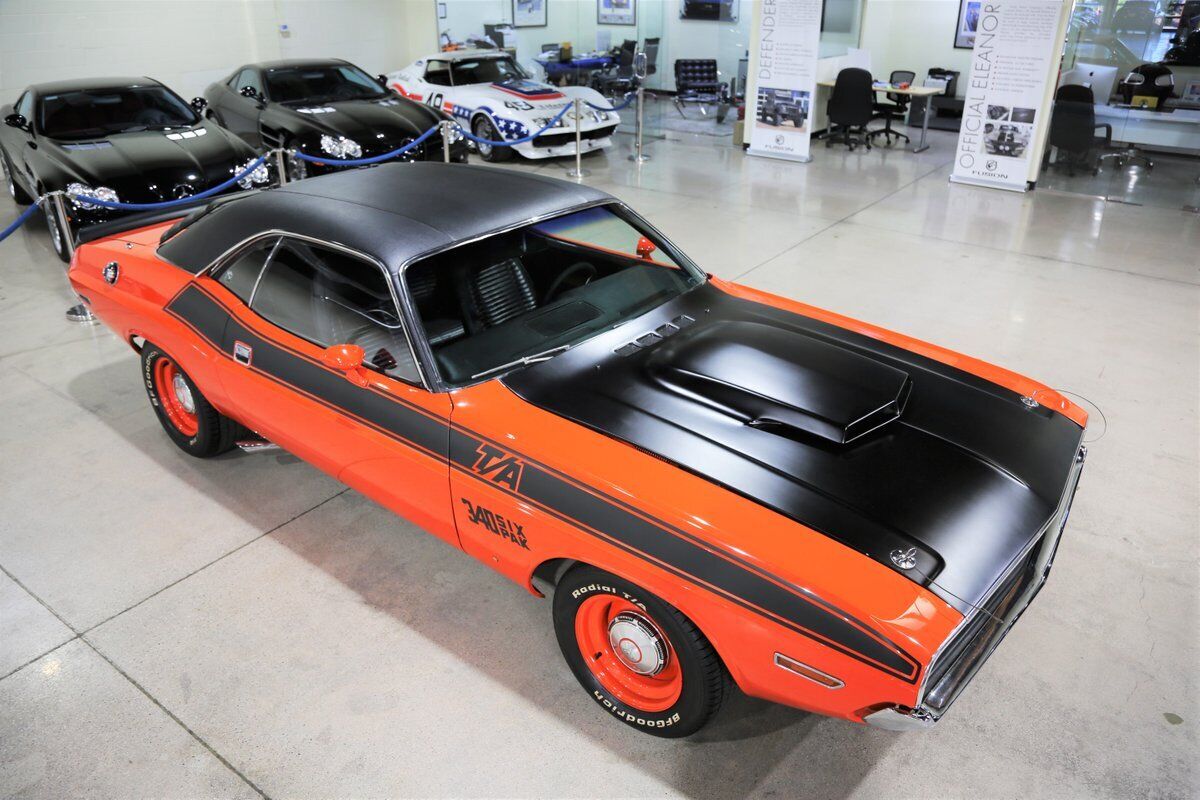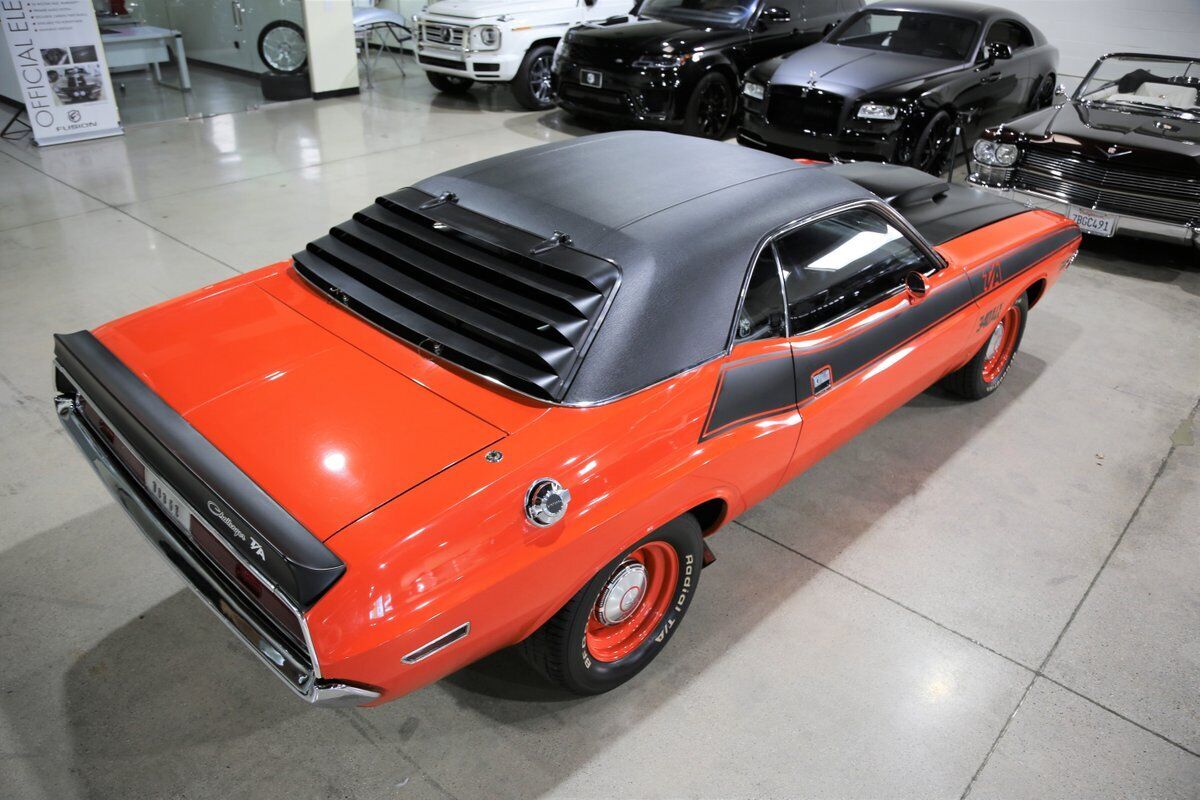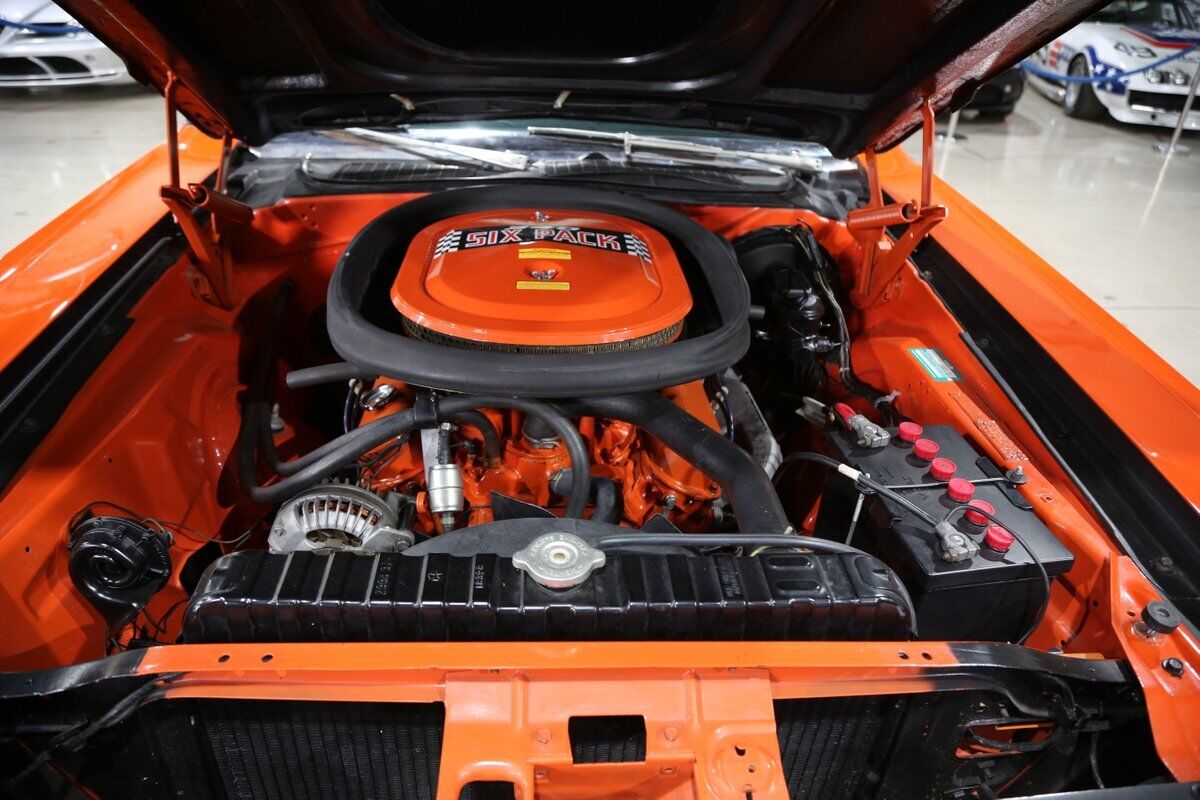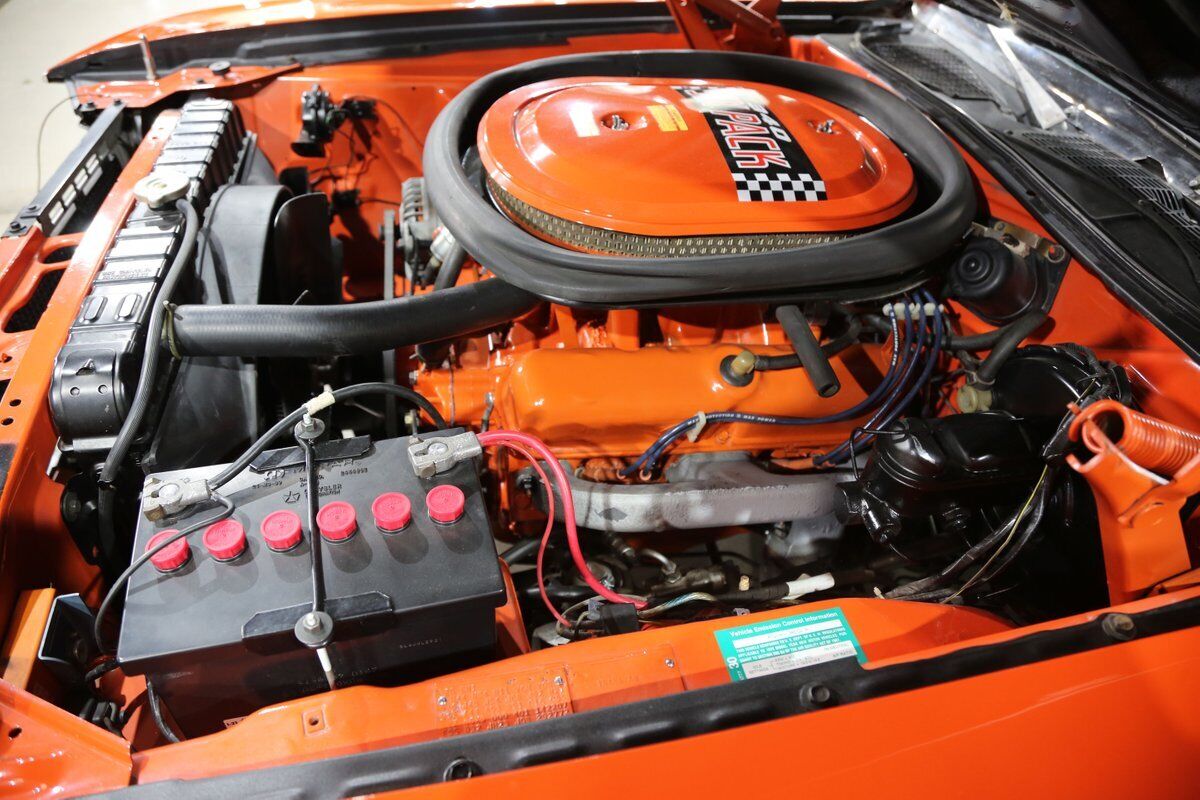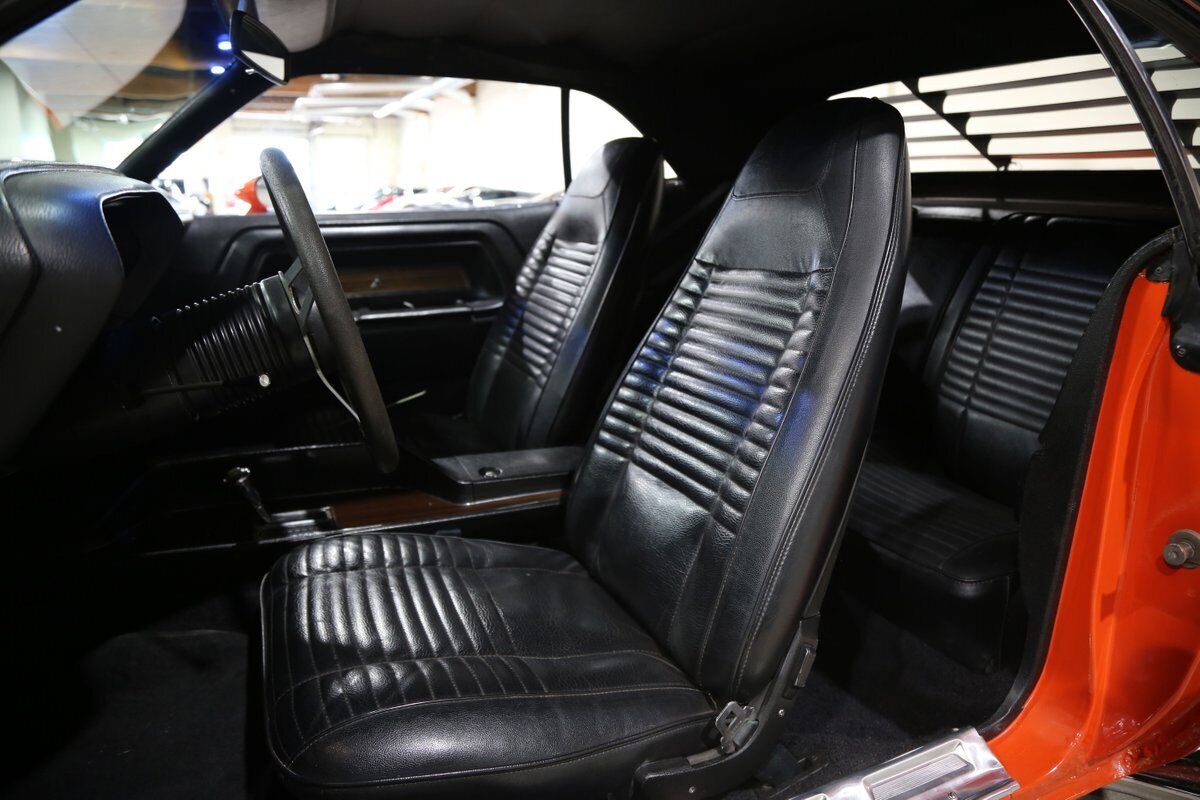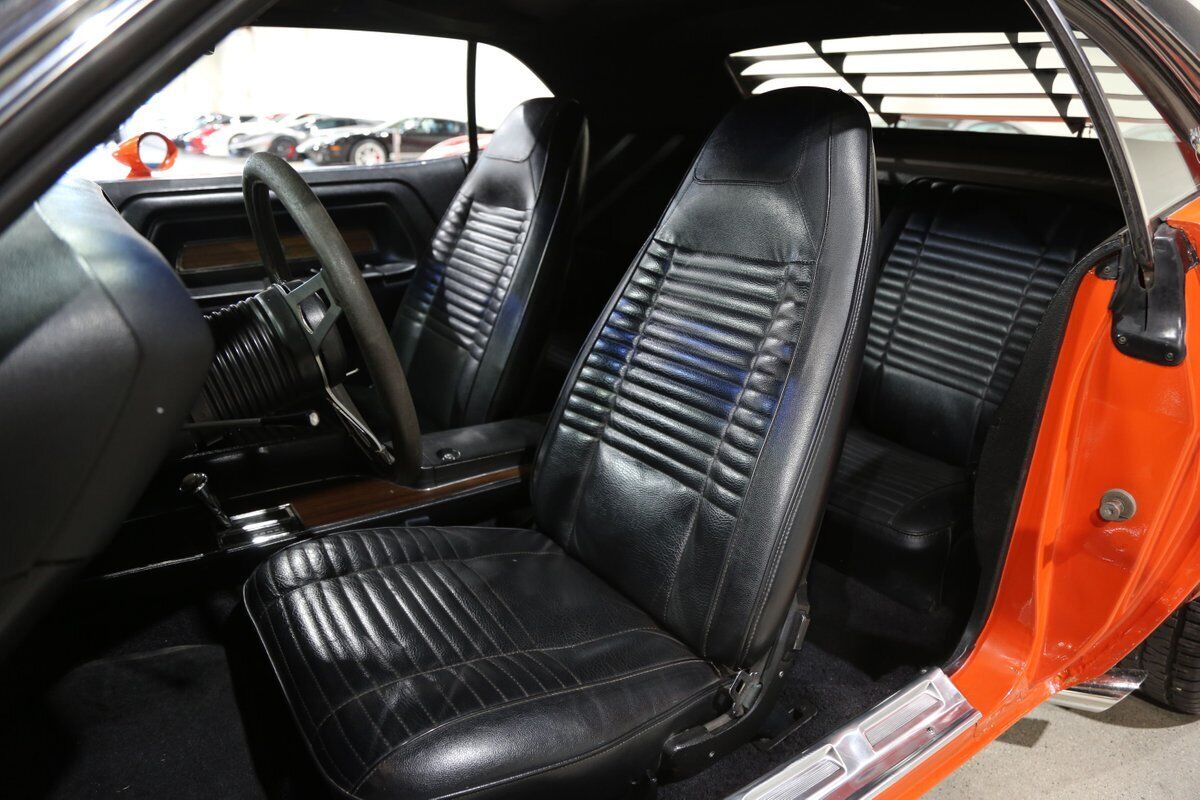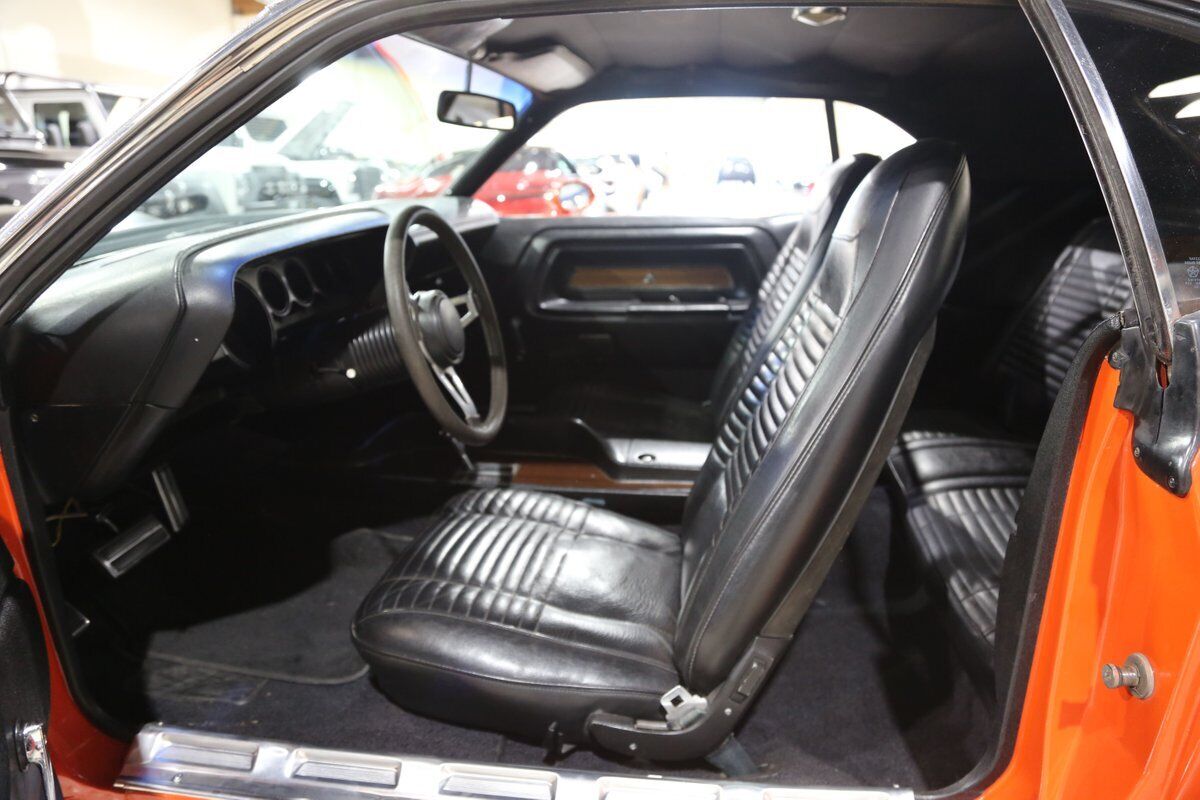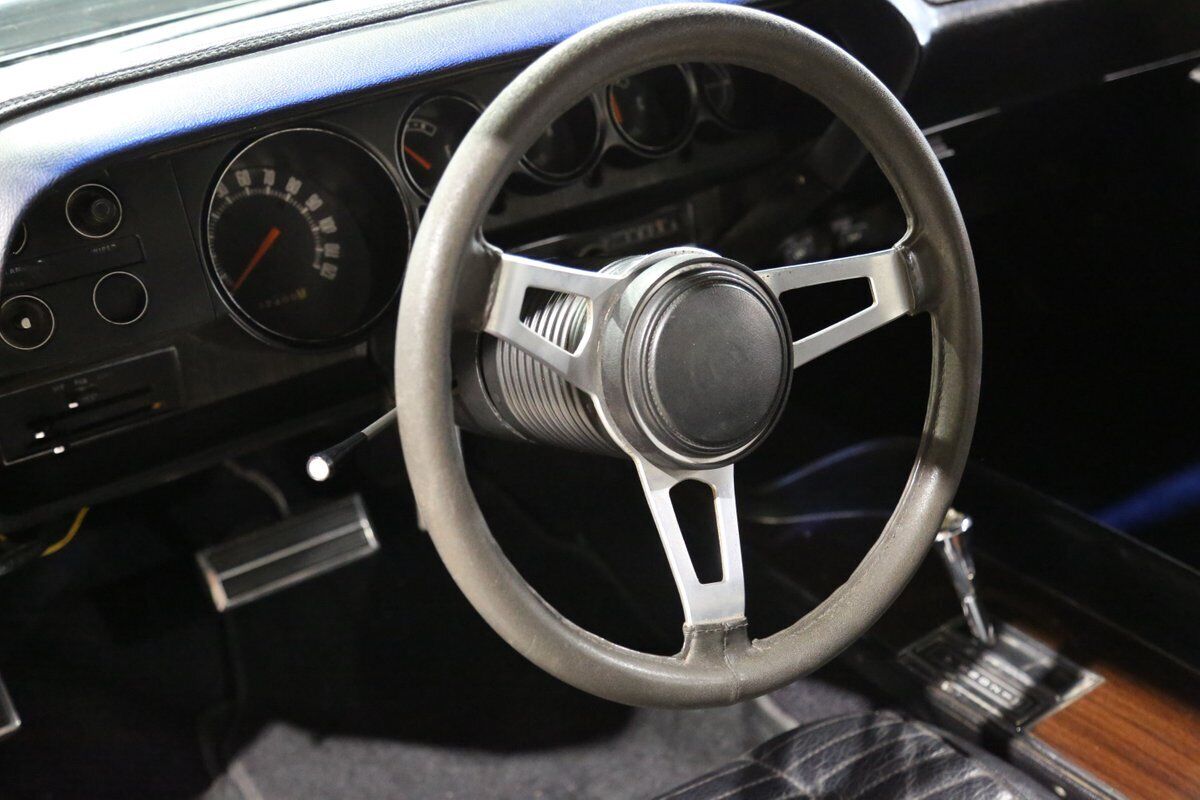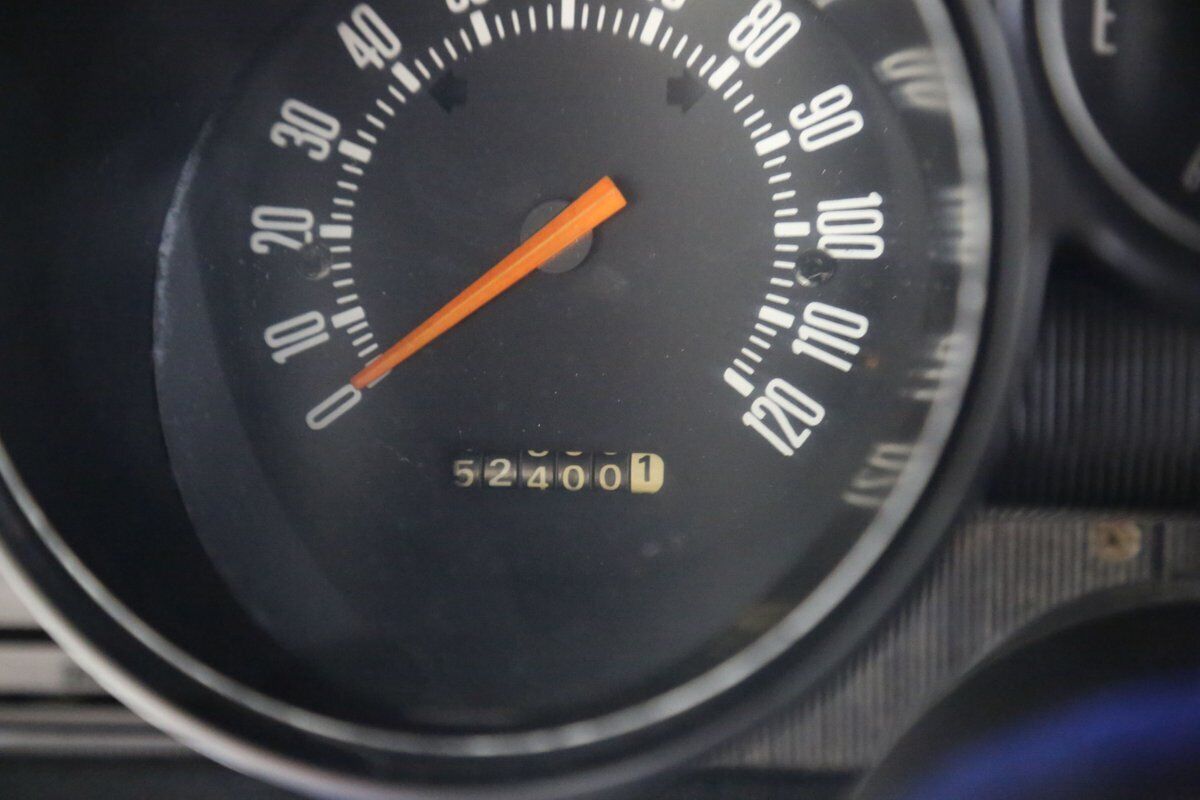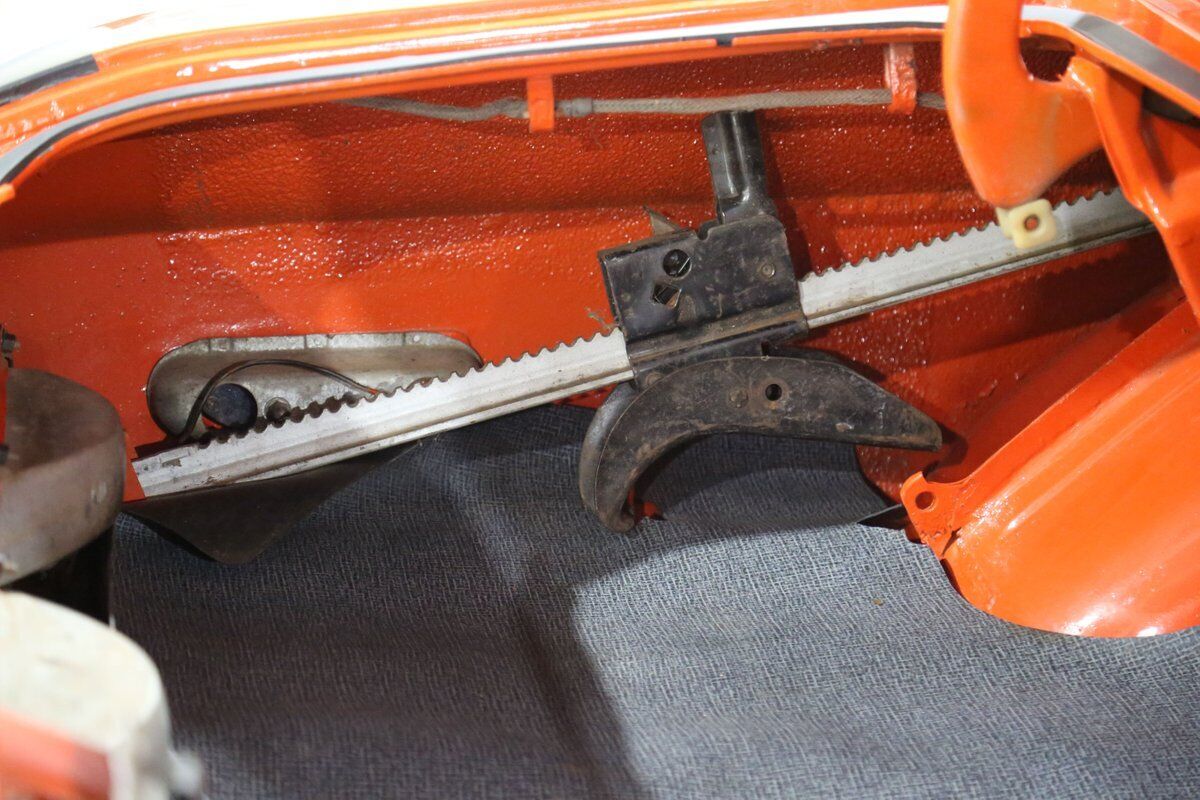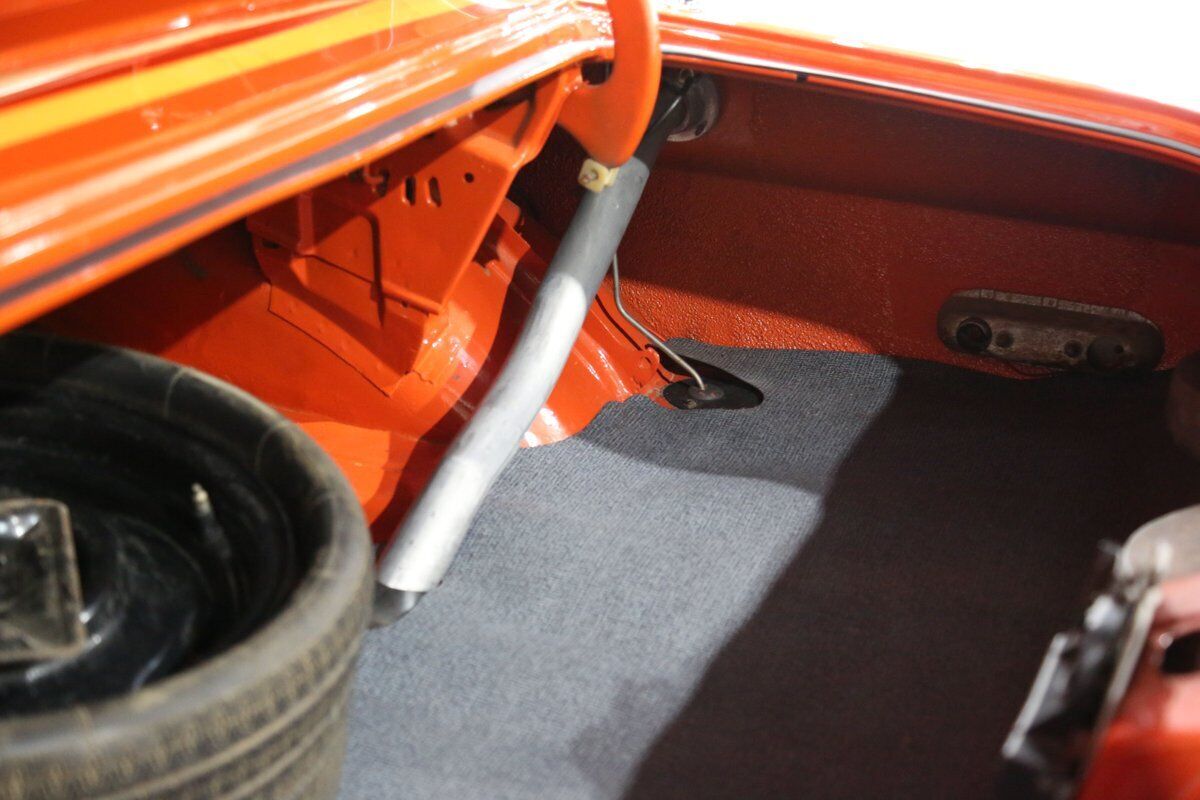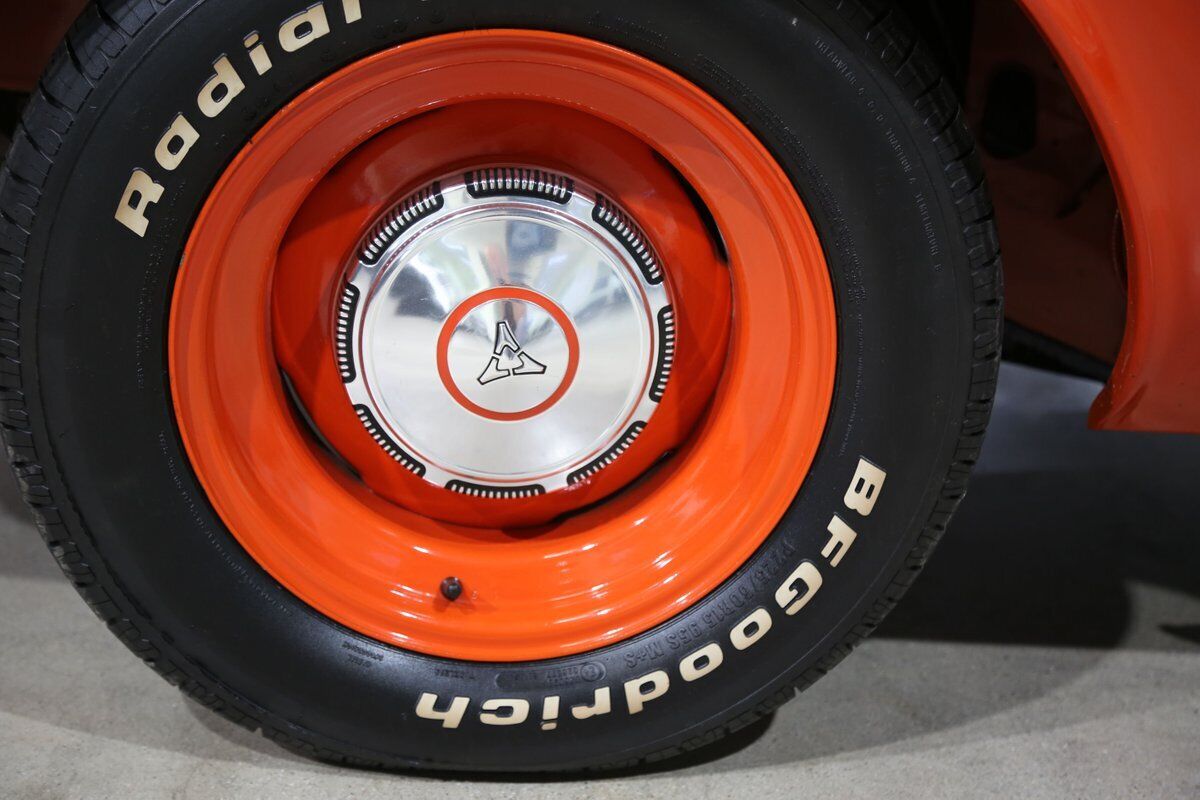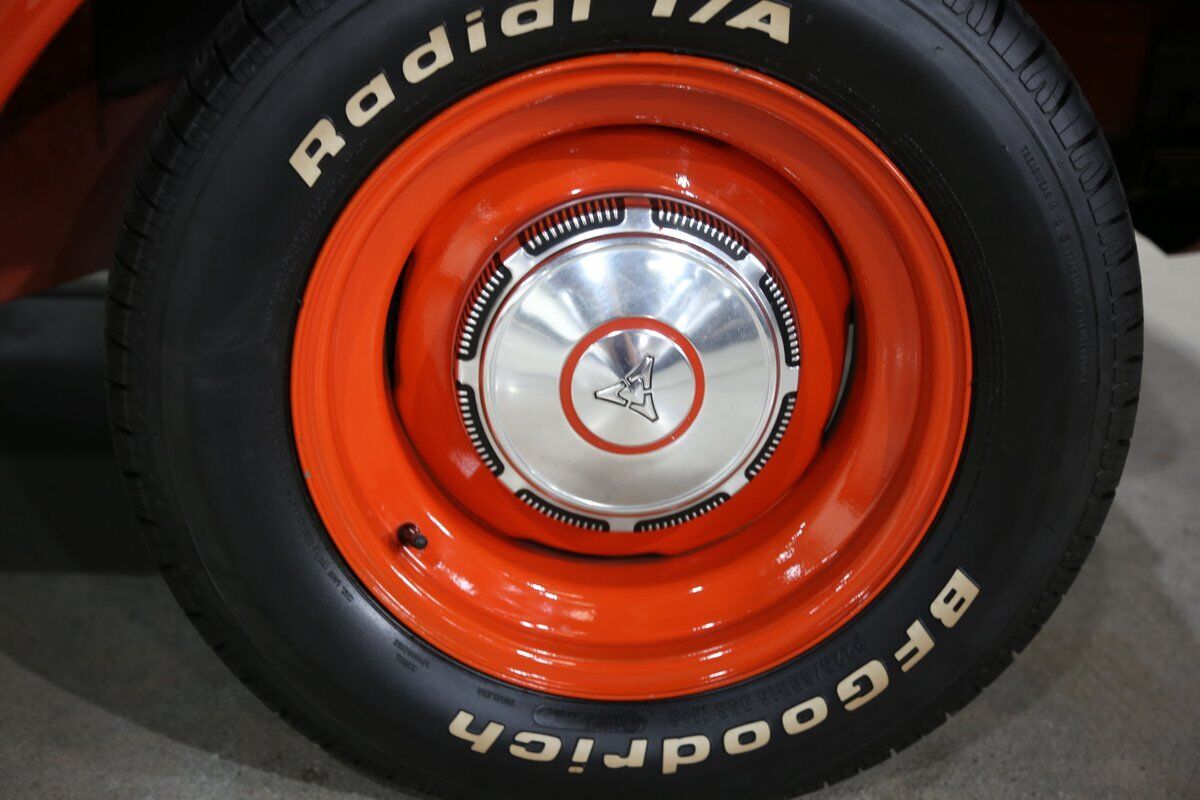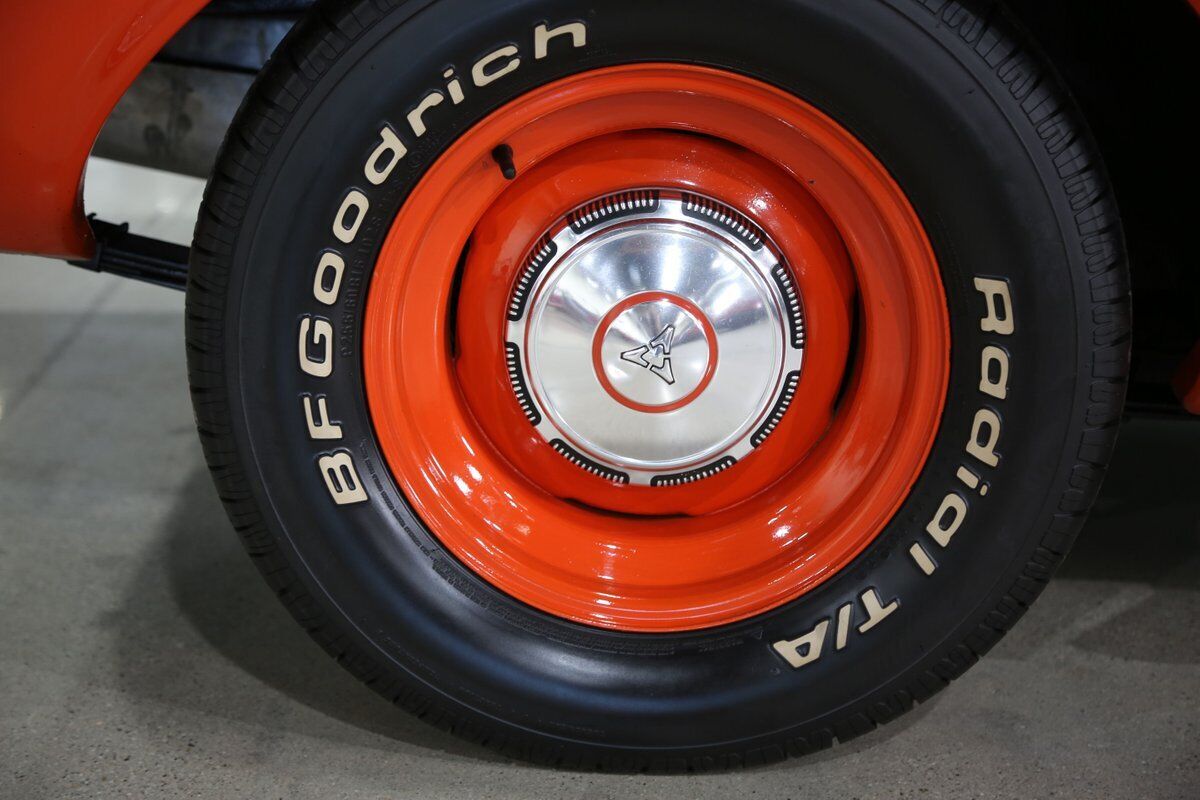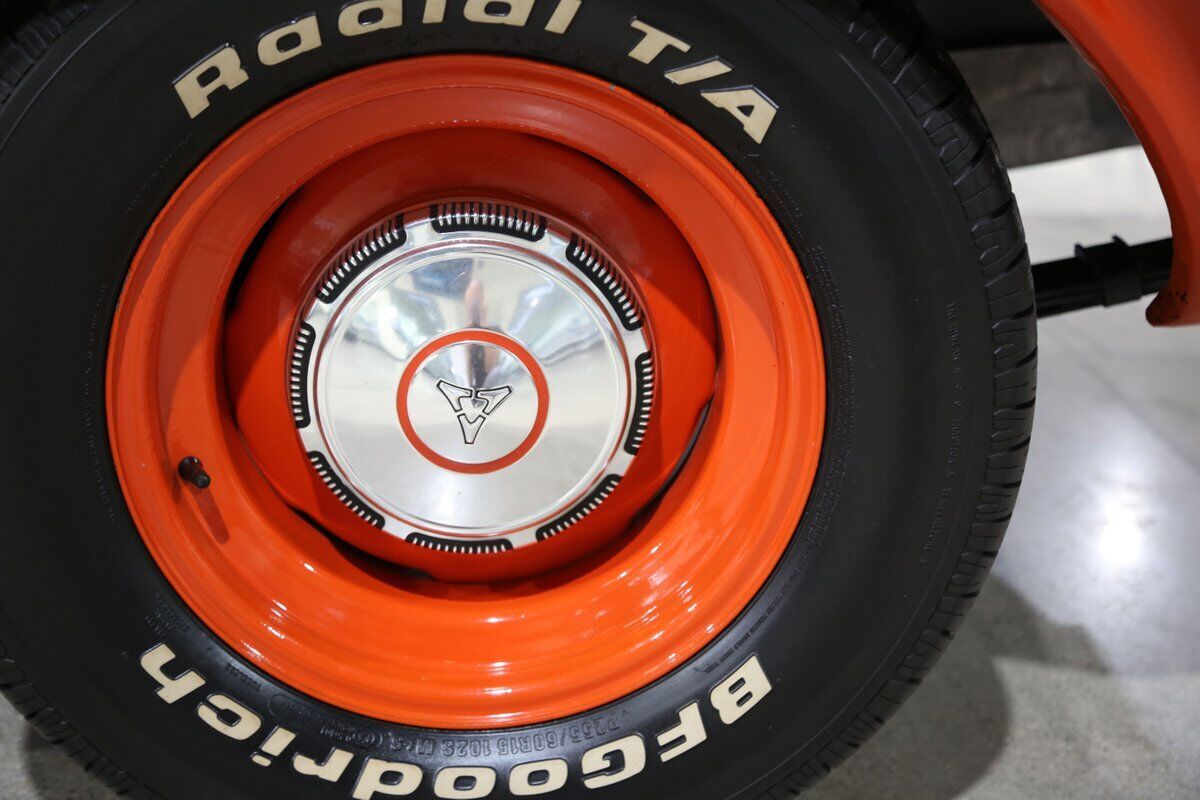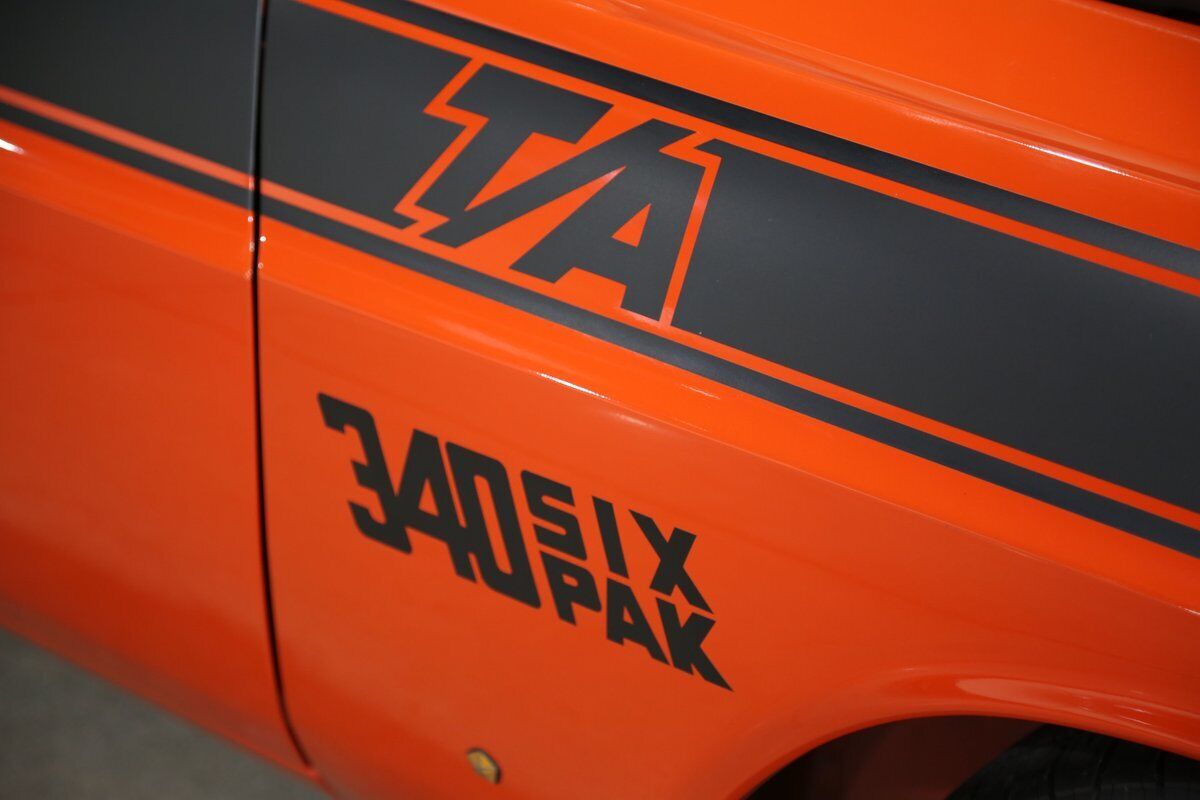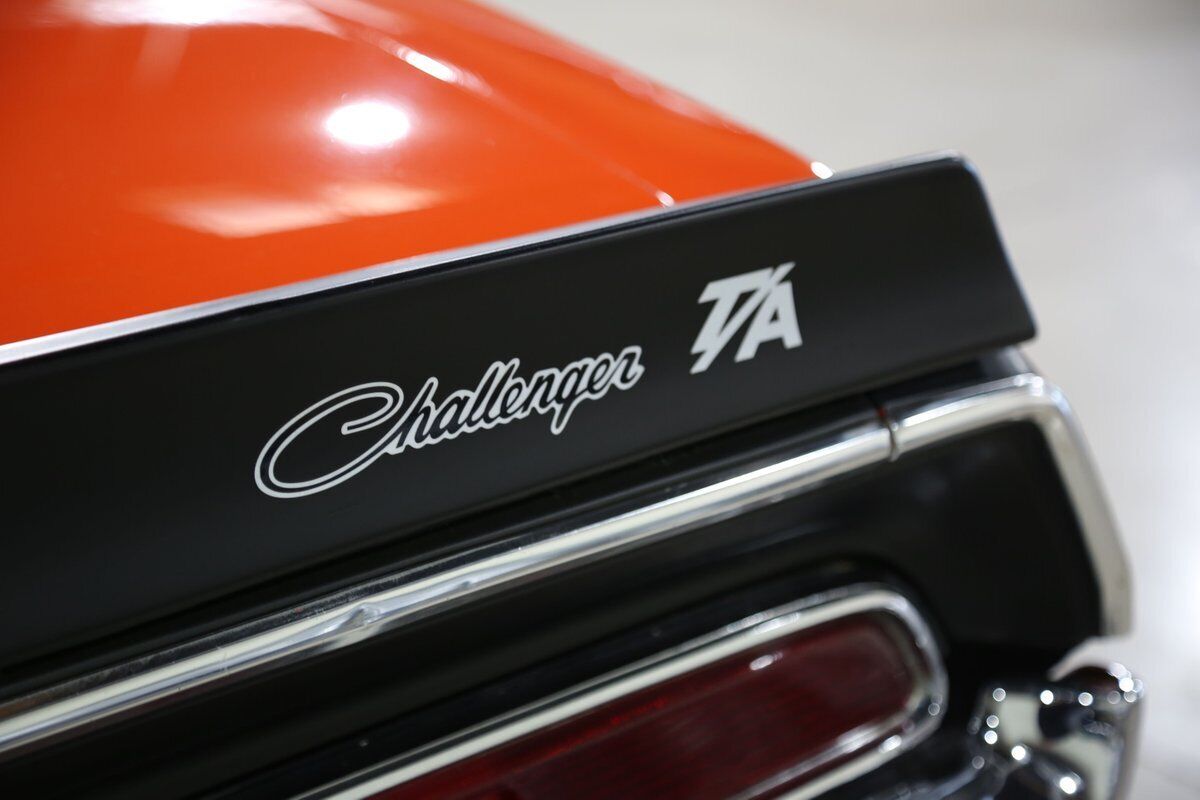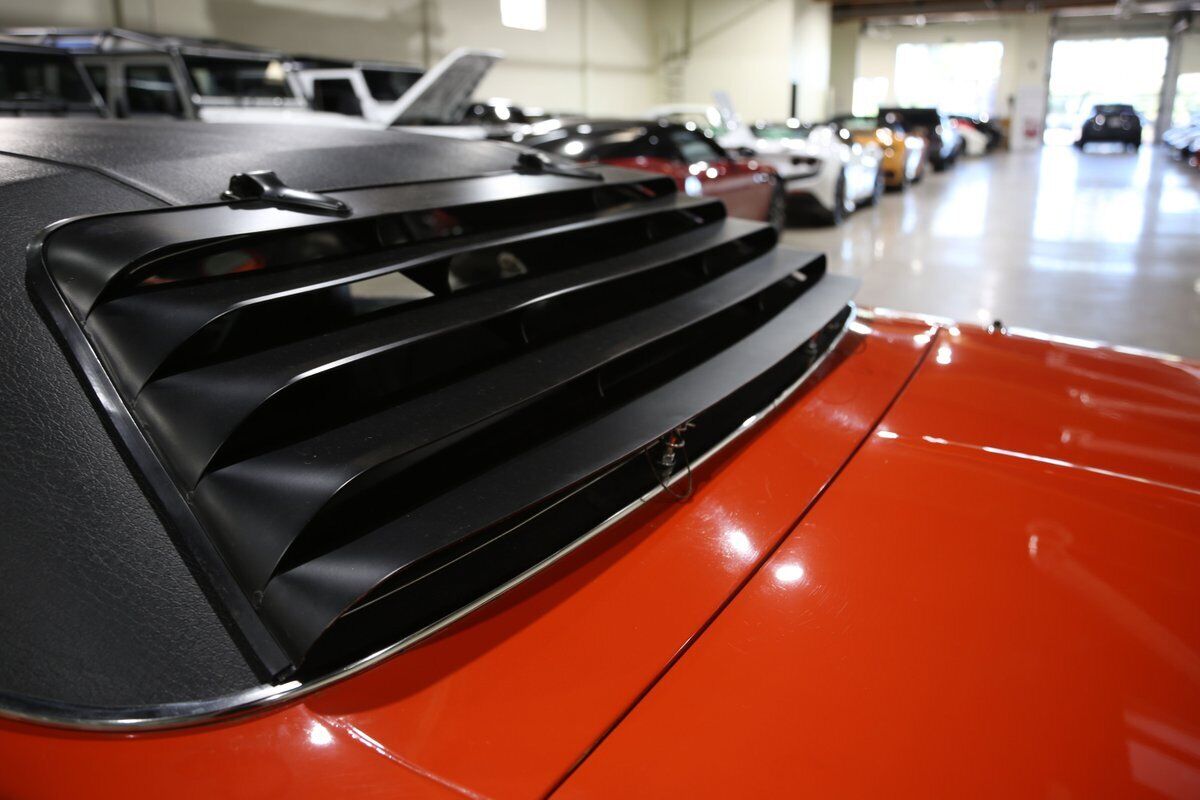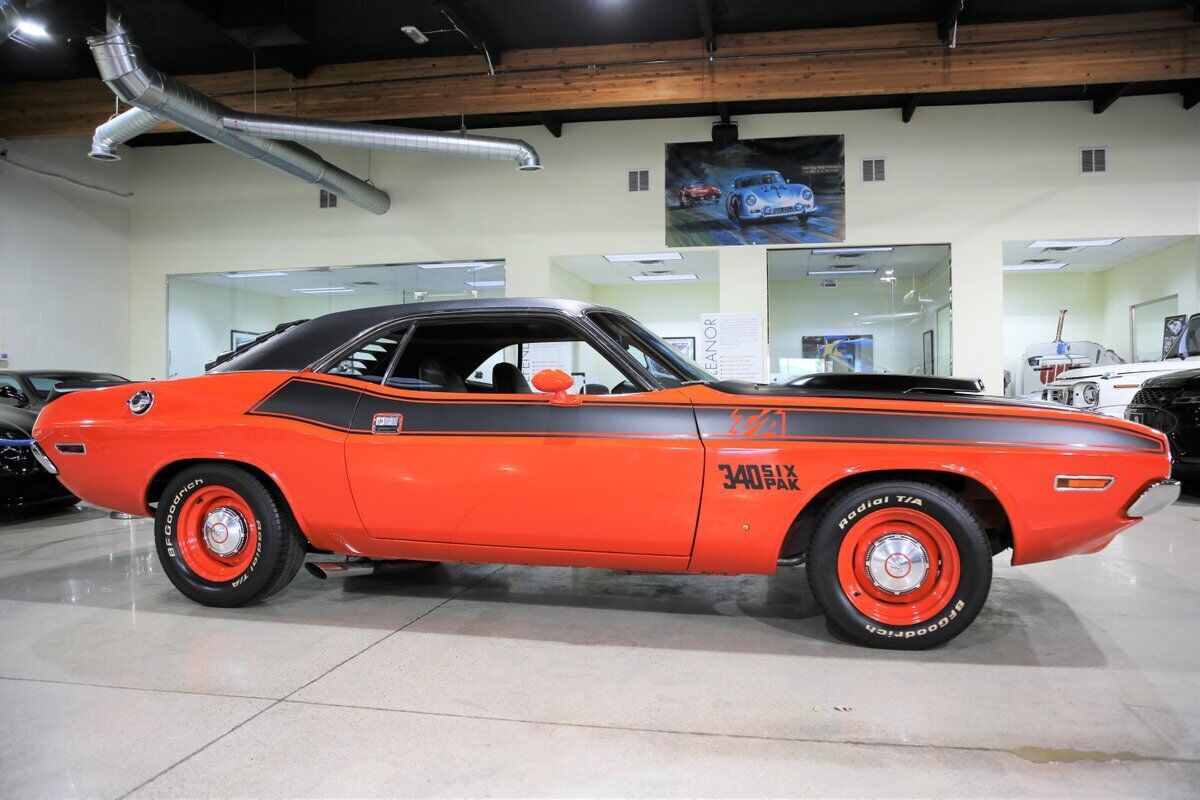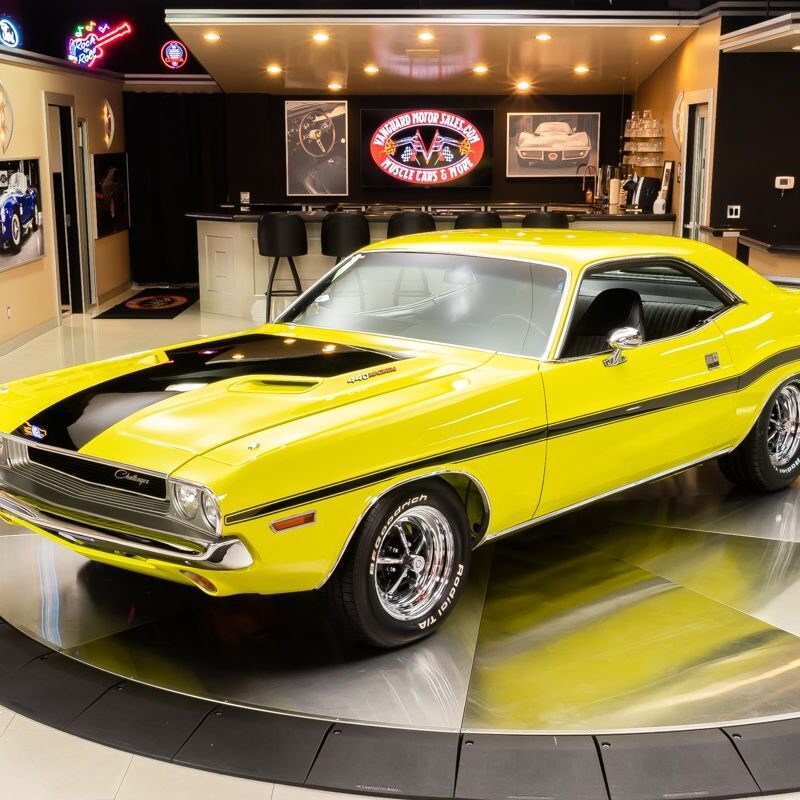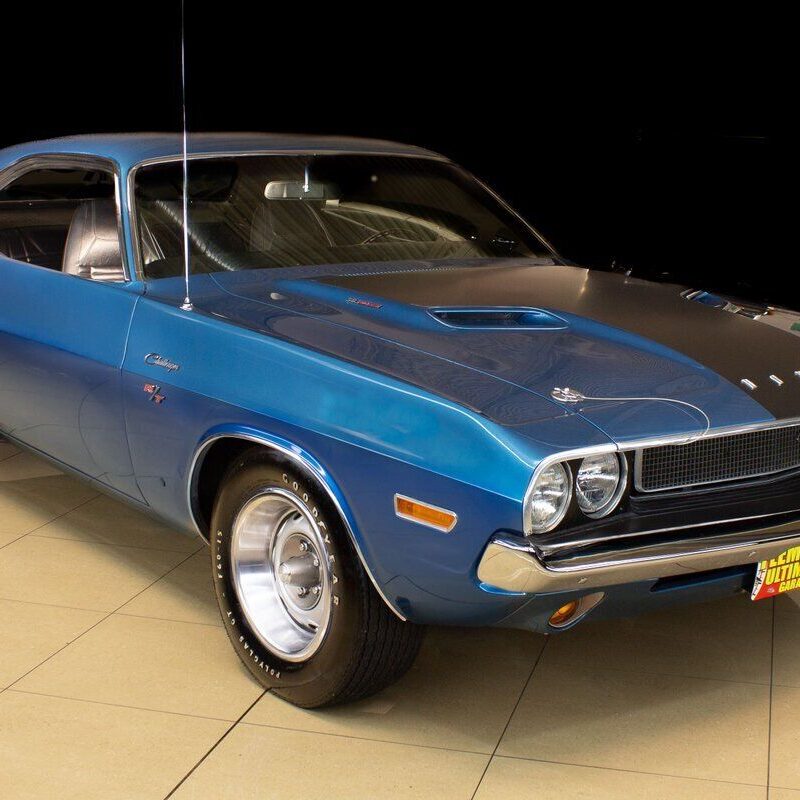
1968 Ford Mustang Cabriolet Shelby GT500KR 428 CI. Cobra Jet V8
June 28, 2022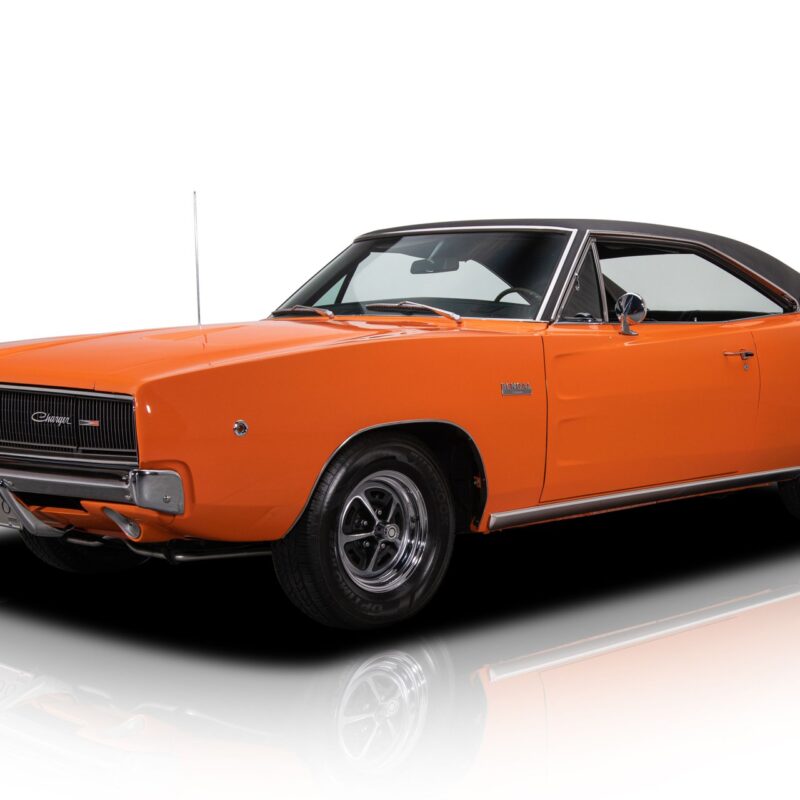
1968 Dodge Charger 383Ci V8
July 6, 2022$129,950.00
Item specifics
| Condition: | Used | Year: | 1970 |
| VIN (Vehicle Identification Number): | JH23J0B2XXXXX | Mileage: |
52400
|
| Body Type: | Coupe | Vehicle Title: | Clear |
| Options: | — | Power Options: | — |
| Make: | Dodge | Exterior Color: | Hemi Orange |
| Sub Model: |
Challenger T/A 340 Six Pak
|
Interior Color: | Black |
| Trim: |
T/A 340 Six Pak
|
Transmission: |
Automatic
|
| Drive Type: | RWD | Warranty: | Unspecified |
| Engine: |
340 Six Pak V8
|
For Sale By: | Dealer |
| Fuel Type: | Gasoline | Model: | Challenger |
1970 Dodge Challenger T/A, #’s Matching engine, Hemi Orange, Broadcast Sheet!!!
Presented is 1 of just 2,399 Challenger T/A ‘s Produced and finished in desirable EV2 Hemi Orange over Black Bucket Seats.
The numbers matching 340 is mated to a period correct 727 Automatic with a Sure Grip Rear End with 3.55 Gears.
An older restoration, the T/A shows very well and includes an Original Broadcast Sheet.
Strong Running and great looking, this T/A is unmistakably Pure Muscle!!
About the Challenger T/A
The Dodge Challenger is the name of three different generations of automobiles produced by Dodge. However, the first use of the Challenger name by Dodge was in 1959 for marketing a “value version” of the full-sized Coronet Silver Challenger.
From model years 1970 to 1974, the first generation Dodge Challenger pony car was built using the Chrysler E platform in hardtop and convertible body styles sharing major components with the Plymouth Barracuda.
Introduced in fall 1969 for the 1970 model year, the Challenger was one of two Chrysler E-body cars, the other being the slightly smaller Plymouth Barracuda. Positioned to compete against the Mercury Cougar and Pontiac Firebird in the upper end of the pony car market segment, it was “a rather late response” to the Ford Mustang, which debuted in April 1964. Even so, Chrysler intended the new Challenger as the most potent pony car ever, and like the less expensive Barracuda, it was available in a staggering number of trim and option levels, and with virtually every engine in Chrysler’s inventory.
The Challenger’s longer wheelbase, larger dimensions, and more luxurious interior were prompted by the launch of the 1967 Mercury Cougar, likewise a bigger, more luxurious and more expensive pony car aimed at affluent young American buyers. The 110″ wheelbase was 2″ longer than the Barracuda’s, and the Dodge differed substantially in its Sheetmetal, much as the Cougar differed from the shorter-wheelbase Mustang. Air conditioning and a rear window defogger were optional.
Exterior design was penned by Carl Cameron, who was also responsible for the exterior designs of the 1966 Dodge Charger. Cameron based the 1970 Challenger grille on an older sketch of a stillborn 1966 Charger prototype that was to have a turbine engine.
A special model only available for the 1970 model year was the Challenger T/A (Trans Am) racing homologation car. In order to race in the Sports Car Club of America’s Trans American Sedan Championship Trans Am, Dodge built a street version of its race car (just like Plymouth with its Plymouth ‘Cuda AAR) which it called the Dodge Challenger T/A (Trans Am).
Although the race cars ran a destroked version of the 340, street versions took the 340 and added a trio of two-barrel carburetors atop an aluminum intake manifold, creating the 340 Six Pack. Dodge rated the 340 Six Pack at 290HP, only 15HP more than the original 340 engine. Air came in through a suitcase-sized air scoop molded into the pinned down, hinged matte-black fiberglass hood. A low-restriction dual-outlet exhaust ran to the stock muffler location, then reversed direction to exit in chrome tipped “megaphone” outlets in front of the rear wheels. Options included a TorqueFlite automatic or pistol-grip Hurst-shifted four-speed transmission, 3.55:1 or 3.90:1 gear ratios, as well as manual or power steering. Front disc brakes were standard.
The special Rallye suspension used heavy-duty parts and increased the rate of the rear springs. The T/A was one of the first U.S. muscle cars to fit different size tires at the front and rear: E60x15 Goodyear Polyglas in the front, and G60x15 on the rear axle. The modified chamber elevated the tail enough to clear the rear tires and its side exhaust outlets. Thick dual side stripes, bold ID graphics, a fiberglass ducktail rear spoiler, and a fiberglass front spoiler were also included. The interior was identical to other Challengers.
The Challenger T/A’s scored a few top-three finishes, but lack of a development budget and the short-lived Keith Black built 303 cu in (5.0 L) engines led to Dodge leaving the series at season’s end. The street version suffered from severe understeer in fast corners, largely due to the smaller front tires. Only 2,399 T/As were made. A 1971 model using the 340 engine with a 4-barrel carburetor was planned and appeared in advertising, but was not produced since Dodge had withdrawn from the race series.
Used
Chatsworth, California
Related products
-
1968 Dodge Coronet R/T 426Ci Hemi V8
$107,900.00 -
1970 Dodge Challenger 440Ci V8
$109,900.00


